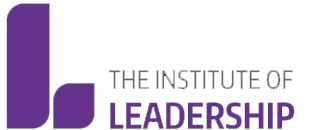Search engine optimization (SEO) is about creating content that provides value to your audience and is easy for search engines like Google to understand. Here’s how you can structure and optimise your website content so that it is optimised for SEO:
Do Keyword Research
Before you write you SEO friendly website content, know what your audience is searching for.
- Use tools like Google Keyword Planner, Ahrefs, SEMrush, Ubersuggest, or AnswerThePublic.
- Look for a primary keyword (main topic) and secondary keywords (related terms).
- Balance search volume (how many people search it) with competition (how hard it is to rank).
Example: If your topic is “healthy breakfast ideas,” your primary keyword could be healthy breakfast, and secondary keywords might be quick breakfast recipes, easy breakfast for weight loss, etc.
Plan Your Structure
Both readers and search engines like organized, scannable content.
- Use a clear title (H1) with your main keyword.
- Break content into subheadings (H2, H3) with secondary keywords.
- Use bullet points, lists, and short paragraphs for readability.
Example: - H1: 10 Easy and Healthy Breakfast Ideas
- H2: Why a Healthy Breakfast Matters
- H2: Top 10 Quick Breakfast Recipes (with H3 for each recipe)
Write for Humans First, Search Engines Second
SEO writing isn’t about stuffing keywords—it’s about natural, valuable content.
- Place the primary keyword in the first 100 words.
- Sprinkle keywords naturally throughout the post (avoid overuse).
- Answer user intent (informational, transactional, navigational).
Ask: If someone finds this post on Google, will they get exactly what they’re looking for?
Optimise On-Page SEO
Key elements to include:
- Title tag (SEO title): 55–65 characters, include the keyword.
- Meta description: 150–160 characters, include the keyword + a call to action.
- URL structure: short, descriptive, keyword-rich.
Example: myblog.com/healthy-breakfast-ideas - Image optimization: compress images, add descriptive filenames + alt text with
keywords. - Internal linking: link to your own related posts.
- External linking: link to authoritative, trustworthy sites.
Use Engaging Media
- Add images, infographics, or videos to increase dwell time.
- Break up text walls with visuals for better reader experience.
- Use descriptive captions and alt tags (helps with accessibility + SEO).

Focus on Readability
Search engines track user experience signals (like bounce rate).
- Use short sentences and paragraphs.
- Aim for a conversational tone.
- Use transition words (first, next, finally).
- Check readability with tools like Hemingway App or Grammarly.
Add a Strong CTA (Call to Action)
Tell readers what to do next:
- Subscribe to your newsletter
- Share on social media
- Read a related post
- Try a product/service
Promote Your Content
SEO friendly websites takes time, sometimes days, sometimes months to take effect – so boost visibility with
promotion:
- Share on social media platforms.
- Send via email newsletter.
- Repurpose into short-form content (Instagram posts, LinkedIn updates, TikToks,
etc.). - Engage in relevant communities (forums, Facebook groups, Reddit).
Update and Refresh Content
Google rewards fresh, accurate content.
- Revisit posts every few months.
- Update stats, links, and examples.
- Add new insights or FAQs.
If all this seems confusing or like too much work, we can write SEO-friendly website content for you.
Quick SEO Checklist for Every Post:
- Primary keyword in title, intro, headings, and conclusion
- Meta title & description optimized
- URL is short and keyword-rich
- Images compressed + alt text included
- Internal & external links added
- Clear structure (H1, H2, H3)
- CTA included
- Proofread for grammar + readability









